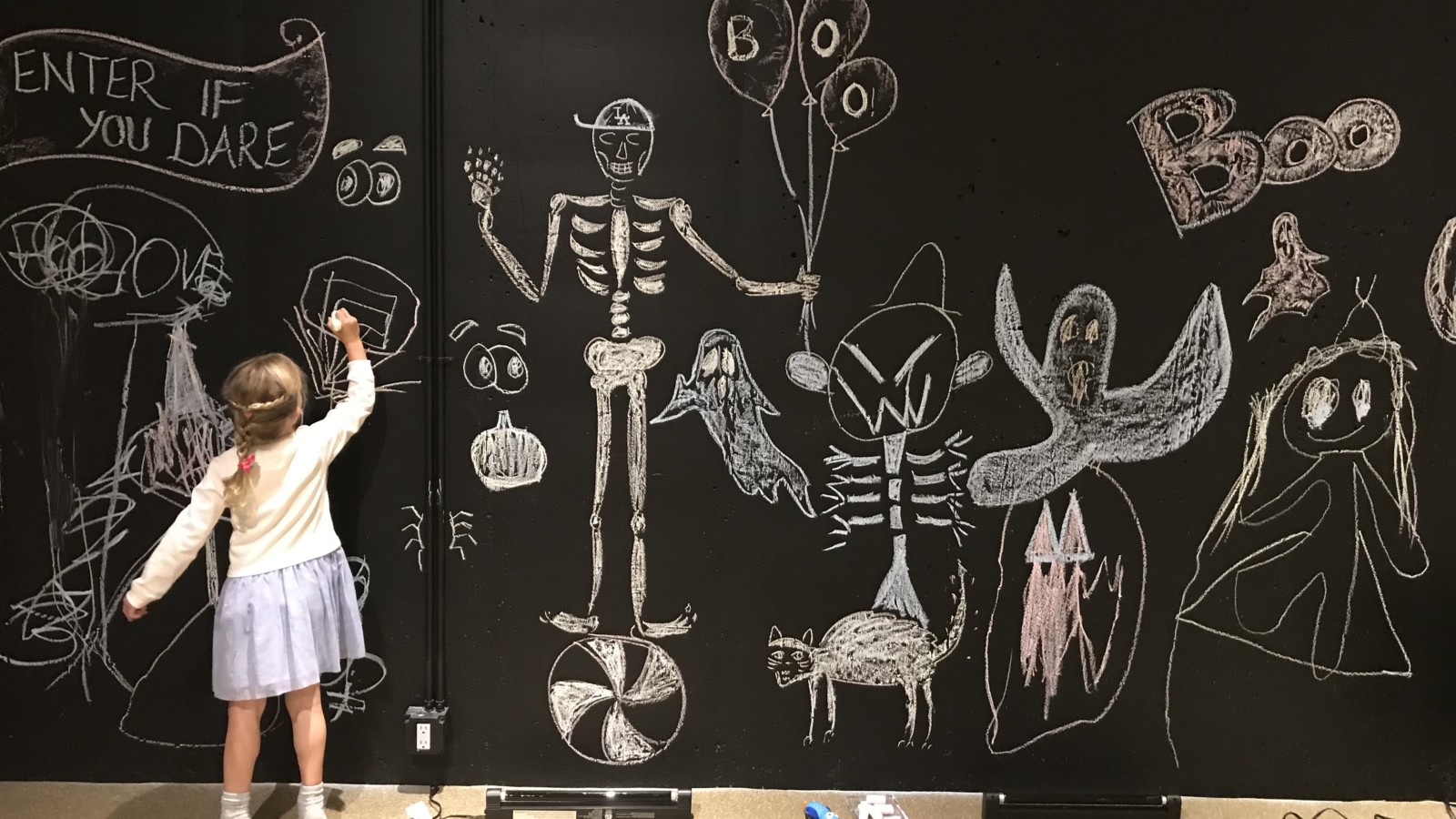Halloween can be a scary time for kids, imaginations are vivid and there is little distinction between reality and fiction—especially when the world suddenly changes into a horror landscape! But Halloween can also provide a fabulous opportunity to talk about fear, and what it does to other emotions. It is also a great time to distinguish the line between your emotions and the thought patterns that come with them as you can parallel it to what is real and what is not in Halloween decorations and costumes!
Understanding context
First and foremost it is important to understand that kids’ fear around Halloween is perfectly natural! It offers a contradiction to everything we have ever told kids – “don’t walk up to strangers’ houses”, “don’t accept candy from strangers”, “if you feel fear listen to your gut!” Instead, on this day, we encourage them to do the opposite. So why is this good?
We (as human beings) are programmed to recognize patterns. And we use those patterns to try and predict the future. Of course those patterns are not actually based in fact, they are based on the stories we tell ourselves about what happened. Sometimes that can be helpful, and sometimes that can be hurtful! But it is a crucial lesson to learn for healthy emotional processing. The earlier we can learn to separate the emotion (fear, anxiety, stress etc) which we cannot control, and the thought patterns (“I can’t do this!” etc.) which you can control, the better you will process your emotions in the future.
Digging deeper on fear
We are going to be seeing quite a bit of fear throughout life. For many it can be highly debilitating, and can make any kind of risk taking close to impossible. But if we can learn to process fear, and discard any thought patterns that do not serve us, we can actually use it to fuel us! I would hope that a brain surgeon feels a little fear before every cut is made. Without it there might be a lack of care and recklessness.
Another great trait of fear is that once you have moved through it, it is usually replaced with a feeling of confidence, joy and pride. All good rewards for a job well done!
So here are some ideas that might help kids process fear and help them develop a solid emotional toolkit!
- Try not to tell kids that they shouldn’t be scared; they are perfectly reasonable in their emotions. But do make the distinction between emotions and thoughts (thoughts are simply fairy tales of the mind).
- Don’t stop at the loudest emotion (likely fear); this is a great time to model that emotions don’t come alone, they come in groups, so ask what other emotions are there.
- Let kids participate or plan the decorations. If they are the ones to plug in the greeting Gargoyle, they will be quicker to remember that it isn’t real!
- When you see decorations elsewhere that are scary, acknowledge that it is perfectly normal to feel fear in that situation, but that the decorations are not real. Talk through how they are feeling and help them distinguish between their emotions and their thoughts! You can also create space between them by asking them to think about more technical questions like how they might have been made, or who would dream up or design such a decoration?
- Have kids imagine their emotions celebrating Halloween: How would they celebrate? Who would do what and why? Have them tell the story through art, music, dance, or creative writing!
- Have kids make some masks, and leverage the moment to talk about why people wear them.
- Try to introduce them step by step. Each child will process the stimuli around them differently so pay attention to their reactions. When their thoughts start spiraling do whatever you can do to stop the momentum. If that means walking away and coming back later that is fine, but try to revisit it and peel back the curtain so they can see it isn’t real, and discard the thought patterns that limit them. The revisit may simply be a picture in a magazine, or a hand-drawn picture, but don’t let your kids feel that the fear won and stopped them from moving through it!
- Once the fear dissipates, think about what replaces that emotion? Do they feel more confident? Signpost for your kids how well they just managed their emotions! They identified, acknowledged, and moved through the fear. This is a valuable skill to develop for a happy and successful life!


